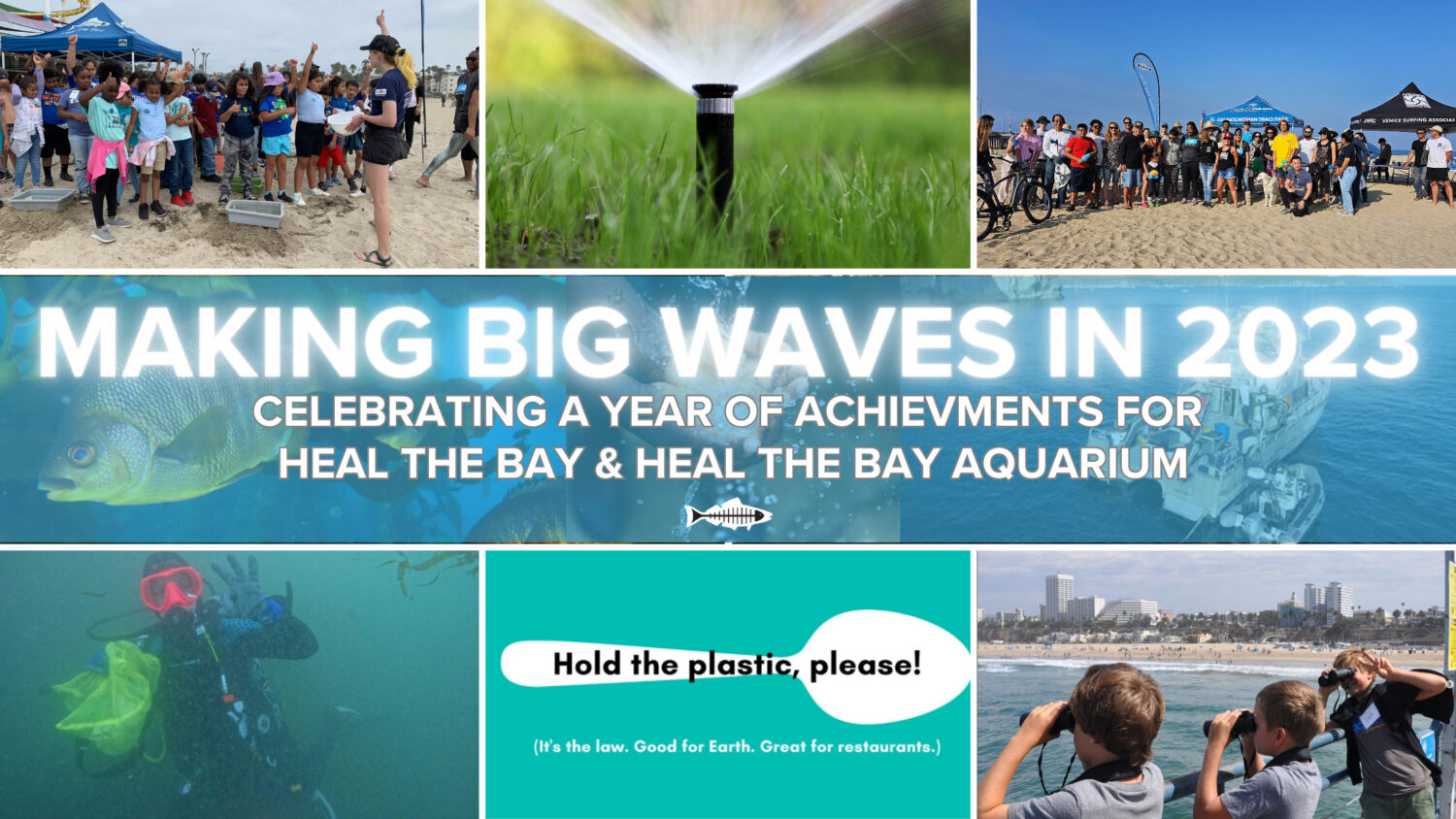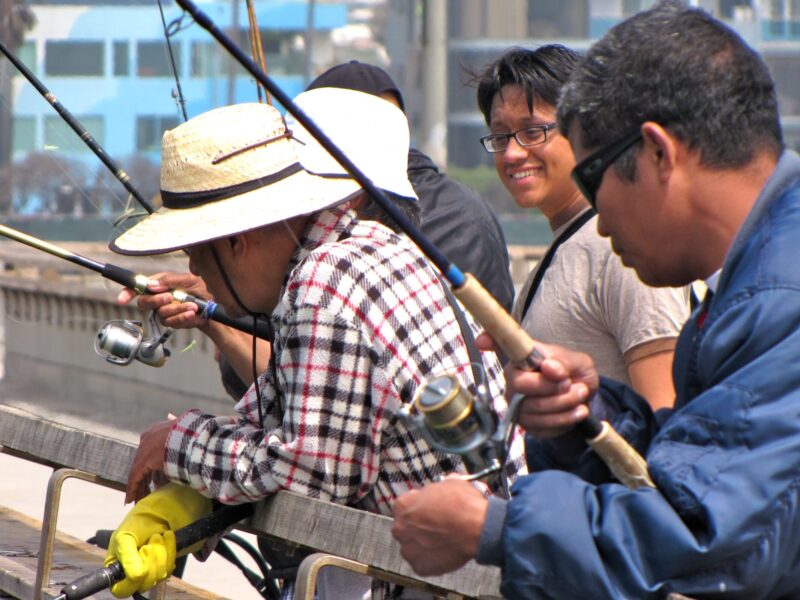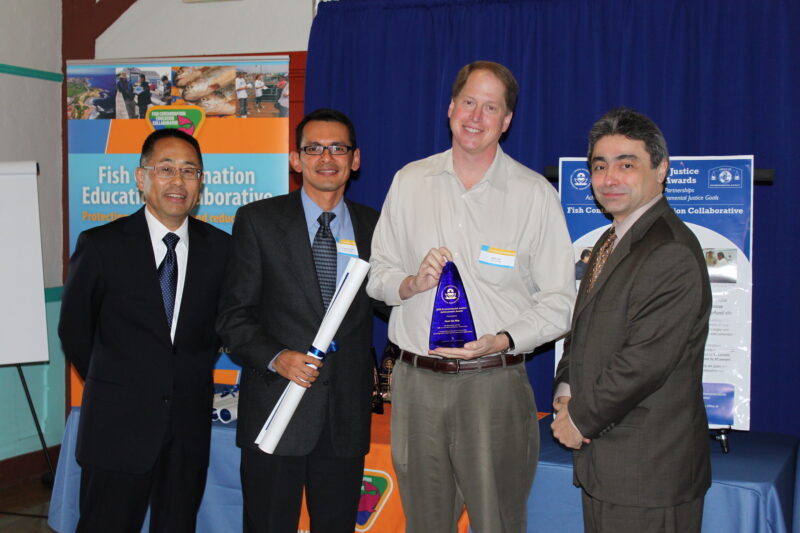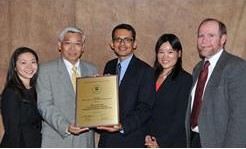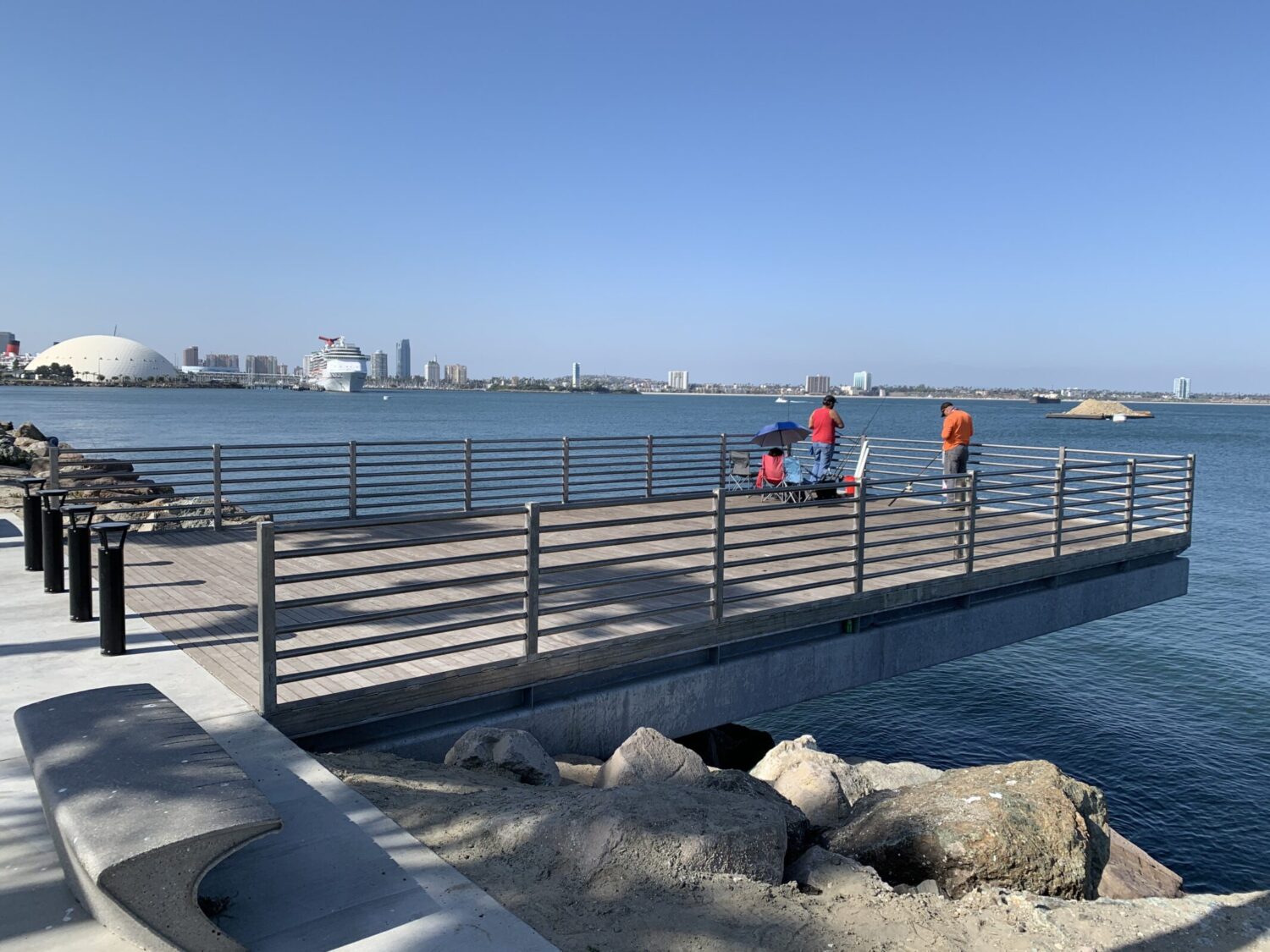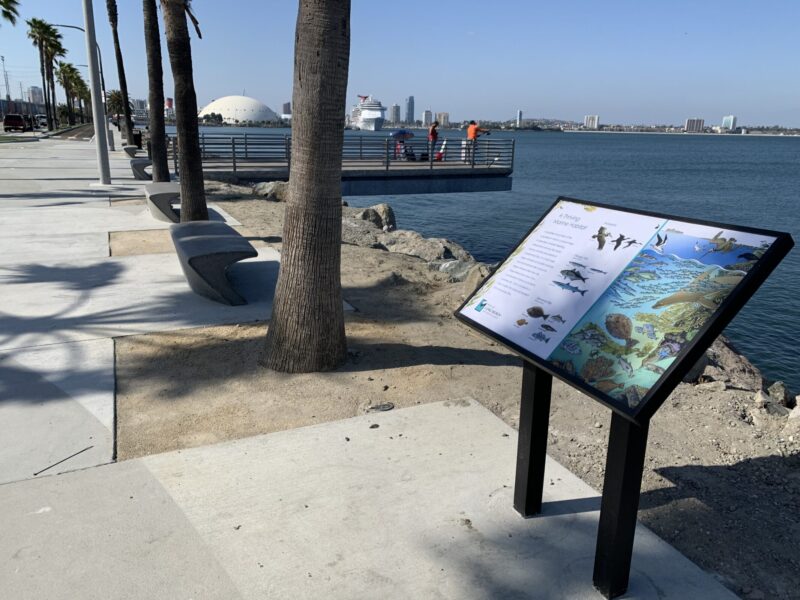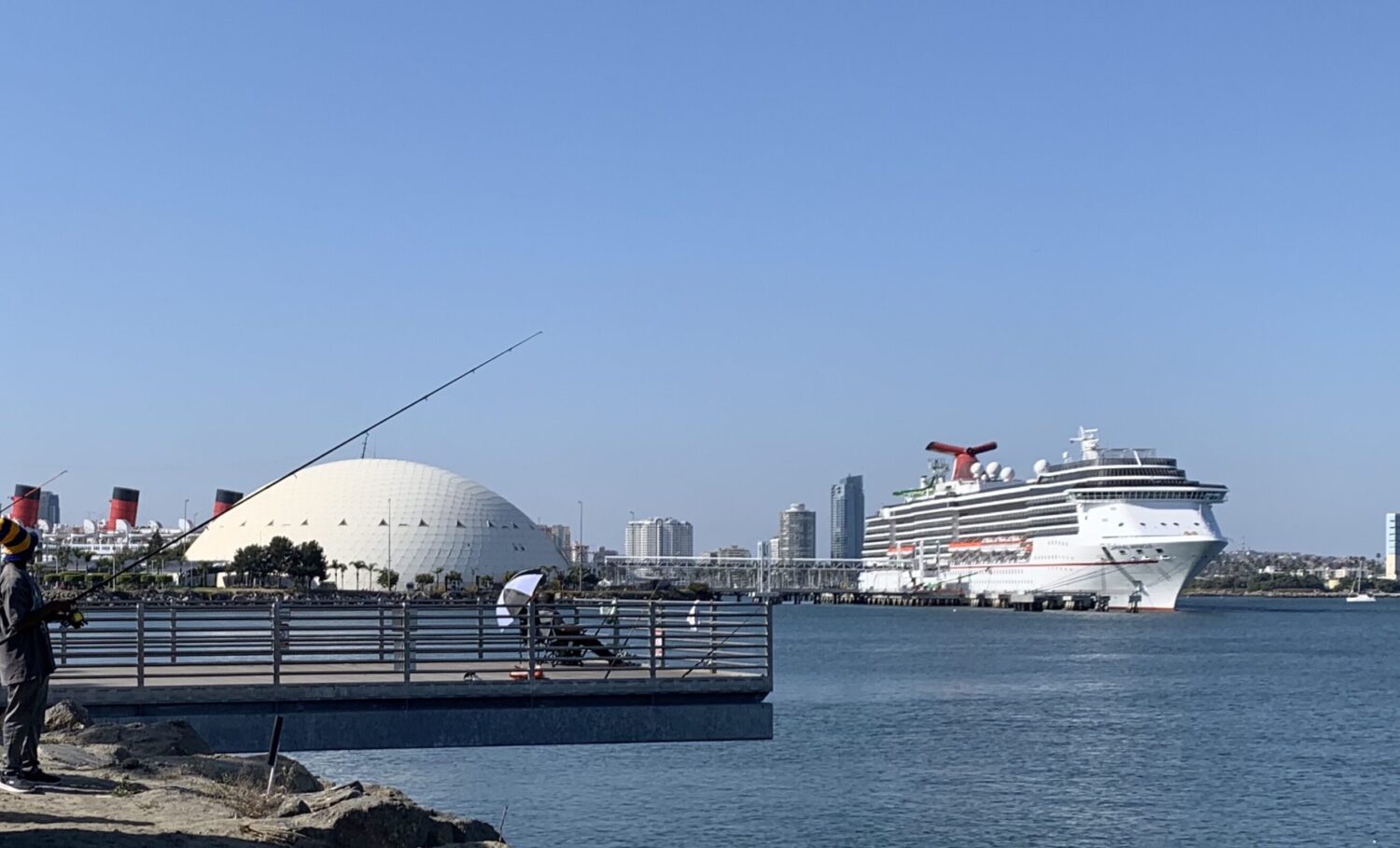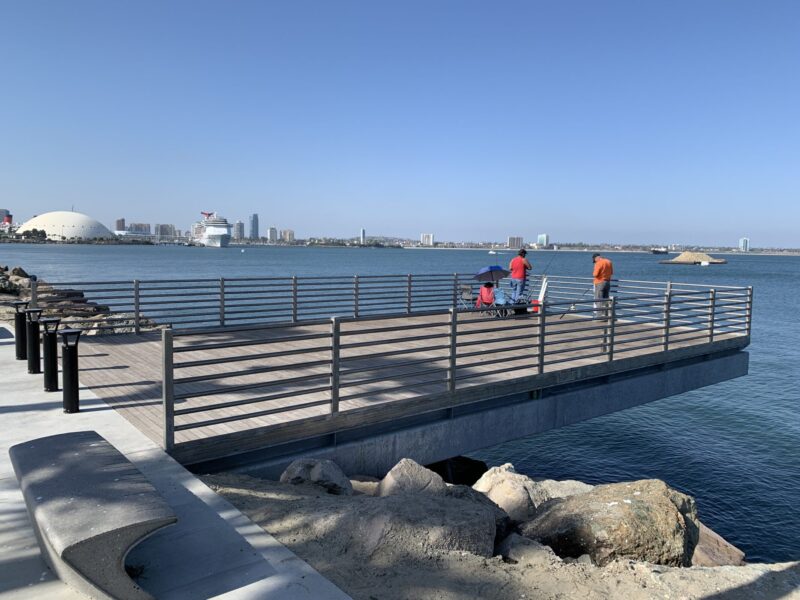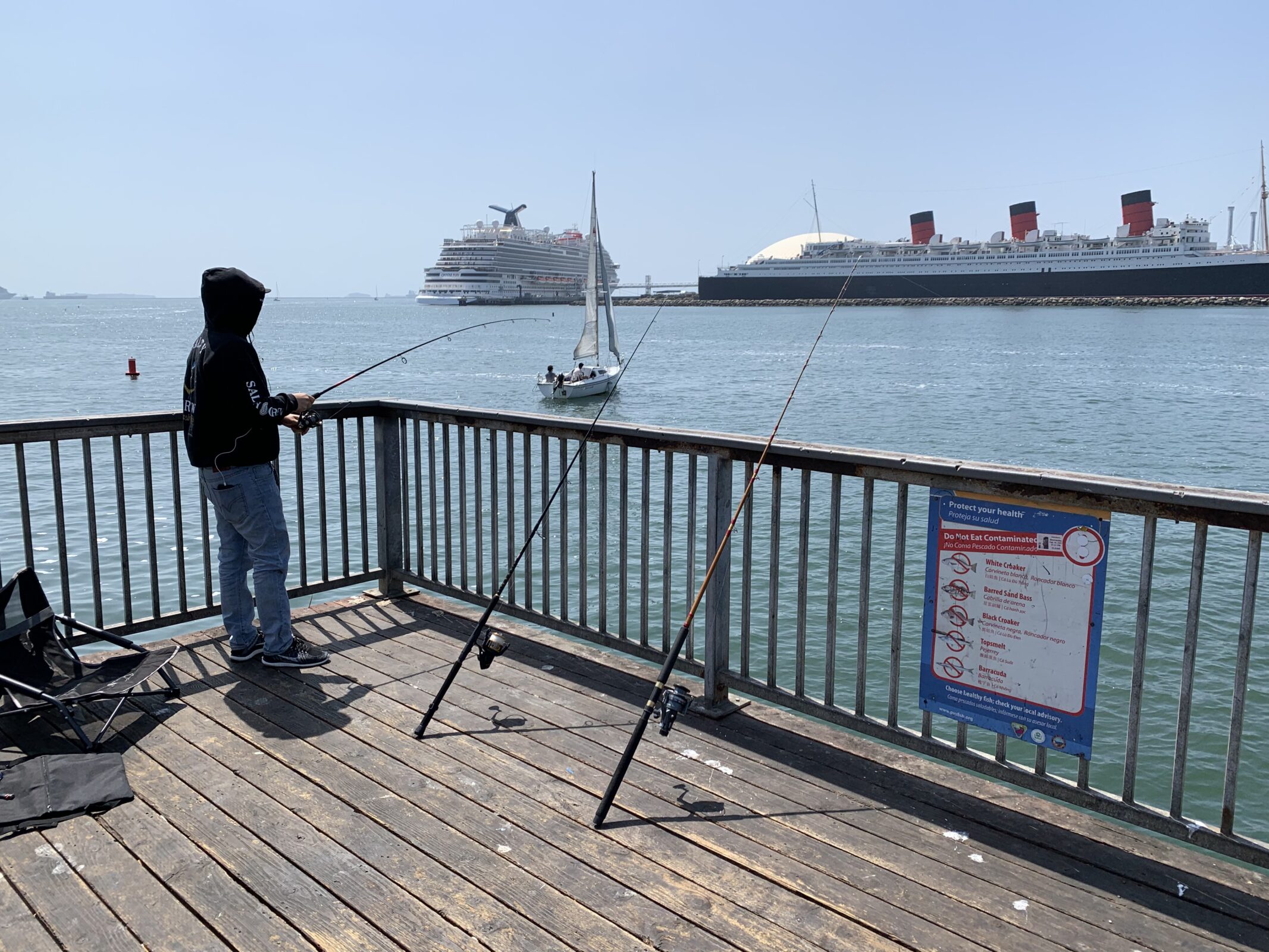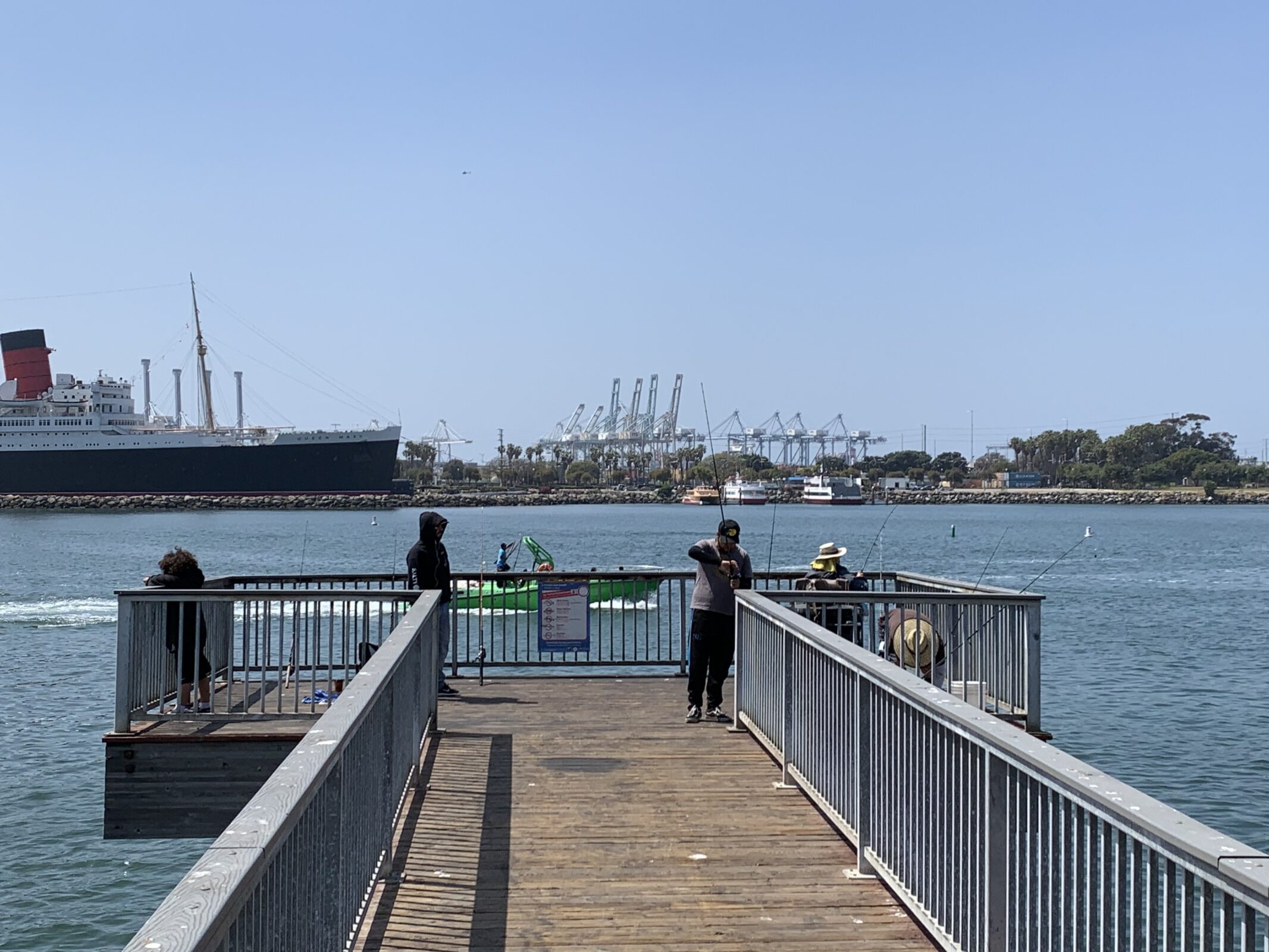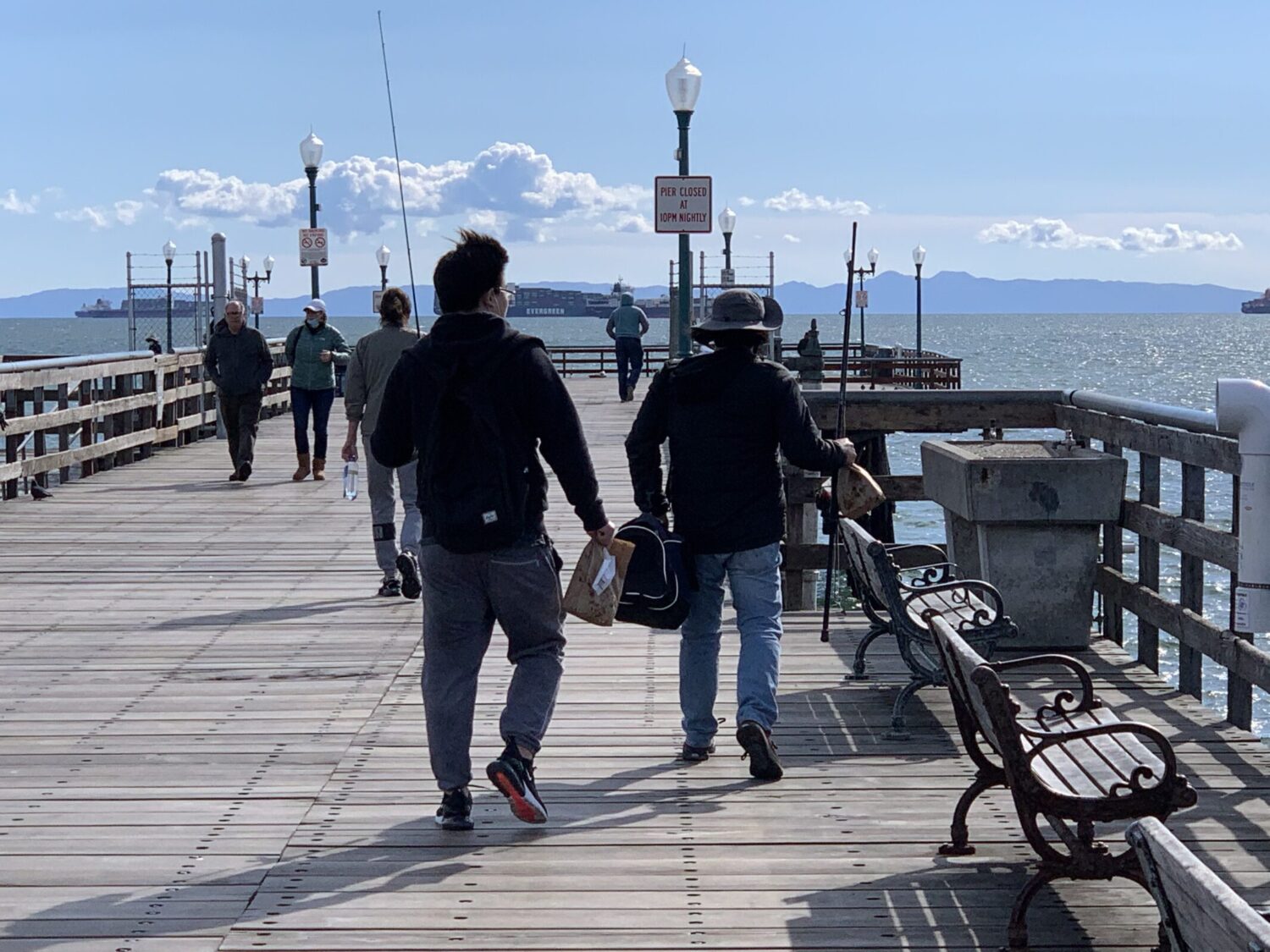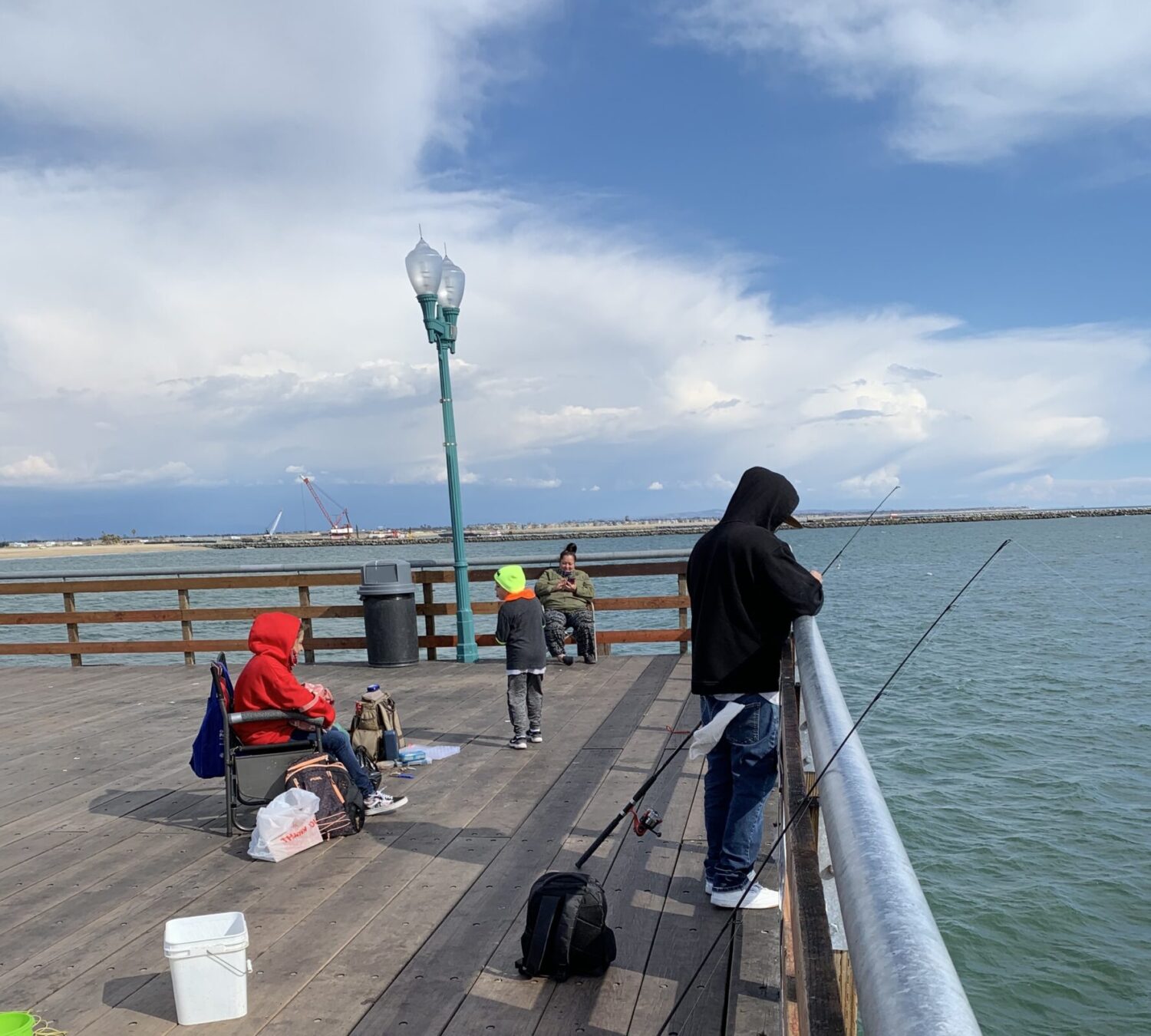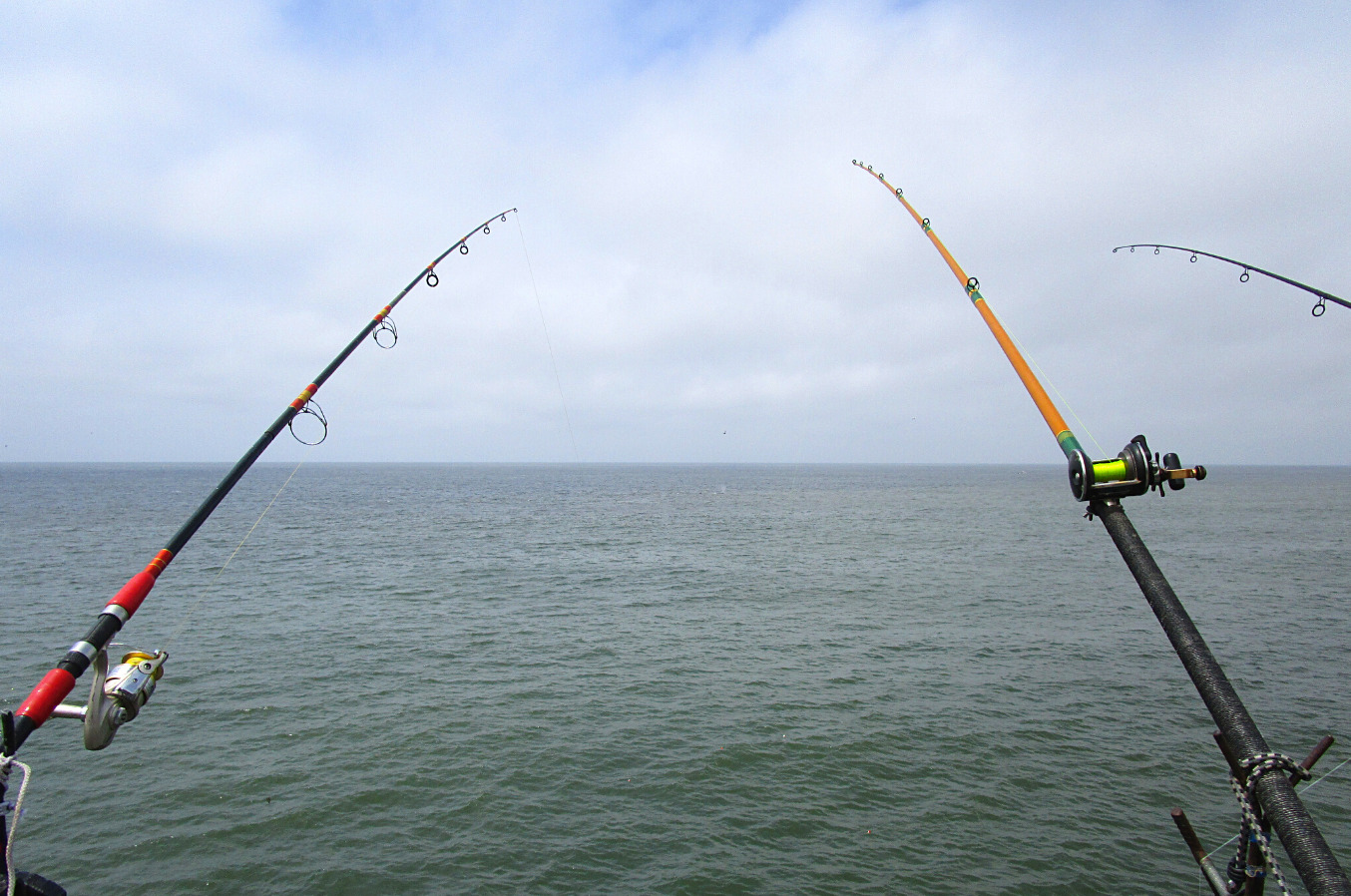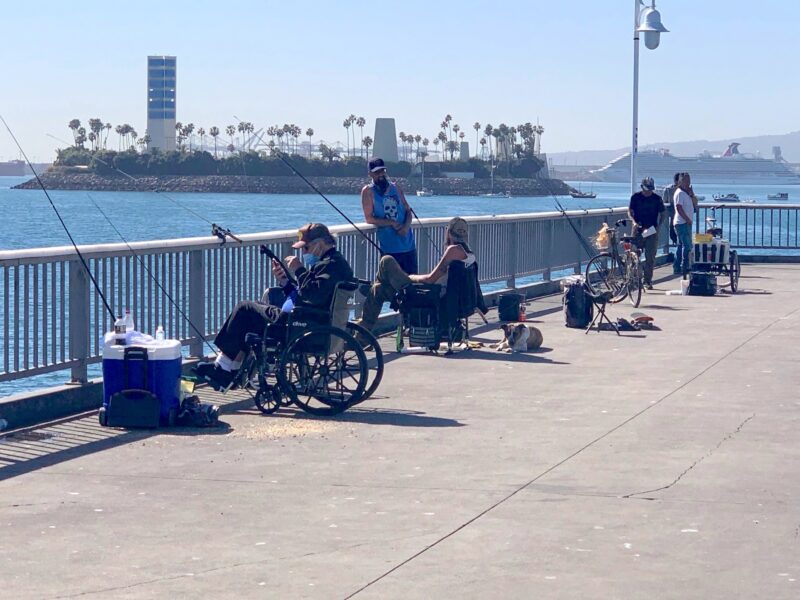Reflecting on a Year of Progress
Heal the Bay achieved significant accomplishments in 2024 in safeguarding our waters, preserving biodiversity, and raising awareness about the importance of environmental conservation. Through our collective efforts and with your unwavering support, we worked tirelessly to create cleaner, healthier, and more sustainable coastal waters and watersheds for Los Angeles and beyond from summit to sea. As we reflect on the achievements of this past year, we are thrilled to carry this momentum into the coming year, always aiming to make a lasting difference. Celebrate them with us!
2024 Highlights
Our expertise was sought after, and our work was celebrated.
In 2024, Heal the Bay was honored for decades of commitment to the environment.
- Heal the Bay was selected as a 2024 California Nonprofit of the Year by Assemblymember Jacqui Irwin of District 42 in recognition of nearly four decades of accomplishments and “outstanding contributions to the communities and environment” we serve.
- The 4th Annual Heal the Bay One Water symposium was convened at Lewis Macadams Riverfront Park, establishing Heal the Bay as a thought leader among civil engineers, water conservation experts, and local, county, and state legislators.
- Heal the Bay continued its work on the LA28 Environmental Sustainability Committee for the 2028 Summer Olympics to ensure the games are the most sustainable yet and leave a legacy of environmental stewardship in the region.
- Heal the Bay Aquarium was voted Santa Monica’s Most Loved Sustainable Green Business of 2024 by thousands of Angelenos.
The First Line of Defense in Environmental Policy
Heal the Bay played a pivotal role in successfully advancing policies and legislation to improve water quality, affordability, and coastal ecosystems and ensure a more sustainable Los Angeles region and climate-resilient California.
- In response to advocacy from Heal the Bay, the LA Regional Board recently approved more stringent regulation of surface water runoff from the highly contaminated Boeing Santa Susana Field Lab site. Boeing immediately filed a legal petition opposing the new regulations. Heal the Bay is engaging in this lawsuit as an interested party in support of the Regional Board.
 Heal the Bay co-authored the Vision 2045 Report with NRDC and Los Angeles Waterkeeper and shared it with LA County decisionmakers tasked with overseeing the ambitious Safe, Clean, Water Program (SCWP). This collaborative “vision” laid out a roadmap of bolder goals, and recommendations to more quickly and definitively reach 2045 SCWP targets and is now being used as a resource by LA County for the SCWP Watershed Planning Efforts.
Heal the Bay co-authored the Vision 2045 Report with NRDC and Los Angeles Waterkeeper and shared it with LA County decisionmakers tasked with overseeing the ambitious Safe, Clean, Water Program (SCWP). This collaborative “vision” laid out a roadmap of bolder goals, and recommendations to more quickly and definitively reach 2045 SCWP targets and is now being used as a resource by LA County for the SCWP Watershed Planning Efforts.
Big trouble for Big Plastic
Recognizing the urgent need to combat plastic pollution, Heal the Bay continues impactful environmental policy work and campaigns to amplify sustainable practices. For several years, staff has worked with LA City and County to help create legislation to break the harmful plastic cycle. We took significant steps toward a plastic-free future by advocating for reducing single-use plastics and promoting responsible waste management.
- We sued Big Plastic! Heal the Bay took historic legal action and joined a coalition of leading environmental groups to file a lawsuit against ExxonMobil, the world’s largest producer of single-use plastic polymers. California’s Attorney General also filed a similar lawsuit today.
 Heal the Bay advocacy supported major wins for state and local plastics regulation this year, including the passage of SB 1053, which removes ALL plastic film bags from checkout counters at convenience stores and grocery stores across the state by 2026 and increases the minimum recycled content requirements for paper bags to 50%.
Heal the Bay advocacy supported major wins for state and local plastics regulation this year, including the passage of SB 1053, which removes ALL plastic film bags from checkout counters at convenience stores and grocery stores across the state by 2026 and increases the minimum recycled content requirements for paper bags to 50%.
- In 2024, Heal the Bay made big waves for the environment by advocating for the unanimous approval of the Environmental Impact Report for the City of LA’s Comprehensive Plastics Reduction Program. This means that in the next 6 months, we could have powerful new legislation in the City of LA to really reduce plastics, and Heal the Bay will be right there alongside key decision-makers to ensure success.
It Takes a Very Large Village
This year Heal the Bay volunteers made massive waves of change.
- In 2024, more than 24,900 Heal the Bay volunteers collected over 24,000 pounds of trash and contributed 71,048 hours to protecting our precious watershed and coastal waters!

- In September, Heal the Bay mobilized 6,600 volunteers on Coastal Cleanup Day, removing 18,269 pounds of trash (including 429 pounds of recyclables) from greater Los Angeles coastlines and waterways.
- This year Heal the Bay Aquarium welcomed 59 new volunteers, and a total of 128 volunteers completed and served 5,494 hours at the Aquarium.
Environmental Health IS Public Health
In 2024, Heal the Bay continued its relentless commitment to ocean water and freshwater quality from summit to sea.
- Our annual Beach Report Card remains the gold standard for water quality reporting, providing access to the latest water quality information based on levels of fecal-indicator bacterial pollution in the ocean at over 700 beaches. For more than 30 years, our annual report has assigned “A-to-F” letter grades and ranked the “Best and Bummer” lists across beaches from Washington State to Tijuana, Mexico.
- The annual River Report Card was also released, ranking freshwater quality and providing grades for 35 freshwater recreation areas in Los Angeles County tested during the summer of 2023. This summer 14 students from colleges across Southern California joined Heal the Bay the Stream Team internship program – our biggest cohort yet! These two programs are at the forefront of our efforts to keep LA’s waters safe and enjoyable for all.
Conservation and Marine Protection Are Key to Our Mission
Heal the Bay reaffirmed its commitment to biodiversity through both volunteer activations and the tireless efforts of our husbandry, operations, and education Aquarium teams.
- Heal the Bay Aquarium plays a pivotal role in species conservation through research, breeding programs, and public awareness campaigns. In 2024, four Swell sharks, dozens of Pacific Sandollars, Giant Spine Sea Stars, Bay Pipefish, and hundreds of Moon jellies were born at the aquarium. Our animal care team released seven protected and rehabilitated marine animals, including keystone species like Swell sharks and Leopard sharks, into Santa Monica Bay. By releasing these animals back into the wild, Heal the Bay continues its mission to protect and support the biodiversity of wild fish populations.
- As part of our commitment to successful conservation efforts, Heal the Bay Aquarium continued its work with the Association of Zoos and Aquariums (AZA) Wildlife Trafficking Alliance. As an official member of the US Fish & Wildlife Department’s Wildlife Confiscation Network pilot program, the aquarium is certified to care for the well-being of wildlife confiscated from illegal trade.
- Heal the Bay’s Science and Policy Team successfully lead public meetings to educate Californian’s on the impacts of DDT on public health and biodiversity.
 They were also featured as experts in the Los Angeles Times documentary “Out of Plain Sight.”.
They were also featured as experts in the Los Angeles Times documentary “Out of Plain Sight.”.
- As a watchdog for Marine Protected Areas, Heal the Bay’s MPA Team is actively contributing and analyzing critical data on California’s first decade-long review that began in 2023. One of the biggest conclusions of the review highlighted the fact that protecting these precious estuaries for the past decade has worked, allowing for flourishing biodiversity, larger populations, and bigger individual animals in these safeguarded areas.
Environmental Equity and Inclusion are pillars of Environmental Health
This year, Heal the Bay continued to advocate for communities that experience the worst systemic and often immediate impacts of environmental injustice and climate change.
- After 10 years of effort by Heal the Bay Outreach, Inell Woods Park, a first-of-its-kind stormwater park, is complete in the Compton Creek watershed. This pocket park will provide green space to an underserved community. The ribbon cutting is estimated for early 2025, highlighting the connection between communities, green space, and health.
- The Heal the Bay Science and Policy Team hosted the Sacred Places Institute for Indigenous Peoples for a day of hands-on water quality testing and knowledge sharing. By blending scientific methods with Indigenous traditions, we gained deeper insights into LA’s freshwater systems and the cultural significance of water.
Environmental Education, Outreach and Sharing our Passion to Protect What We Love
Education remained a cornerstone of our mission. In 2024, Heal the Bay expanded our outreach program, teaching schools and communities to understand the importance of environmental conservation and the role each individual can play.
- Educational efforts continued to inspire and inform diverse audiences through innovative approaches and interactive science-based programs. The Heal the Bay Aquarium Education Team sponsored 247 field trips and welcomed 11,668 enthusiastic students from 22 school districts in LA County, including 85 students from Title 1 schools.
- This year, “Coastal Cleanup Education Day” at the Aquarium hosted more than 118 3rd-6th grade students from across Los Angeles County for a day of beach exploration, scientific excursions, education, and hands-on learning while having fun in the sun.
 In 2024, Heal the Bay built a blue economy, providing professional training on sustainable aquaculture practices in partnership with Santa Monica College. This program not only empowers future environmentalists with hands-on job training, but it has also allowed Heal the Bay Aquarium to lead a program that has put them on track to achieve 90% sustainability through aquaculture and animal donation within the next five years.
In 2024, Heal the Bay built a blue economy, providing professional training on sustainable aquaculture practices in partnership with Santa Monica College. This program not only empowers future environmentalists with hands-on job training, but it has also allowed Heal the Bay Aquarium to lead a program that has put them on track to achieve 90% sustainability through aquaculture and animal donation within the next five years.
- Speakers Bureau and Beach Programs (through the Adopt a Beach Program) gave 195 talks this year to educate the public on all Heal the Bay’s amazing and impactful work.
Cheers to 2024

As we look back on 2024, Heal the Bay celebrates a year of accomplishments, resilience, and collaboration. These achievements underscore the collective efforts of our dedicated team, volunteers, and supporters who positively impact the health of our oceans and coastal ecosystems.
Here’s to a future with even more significant strides toward a sustainable and thriving planet!
Looking to the Future with 2025 in our sights



In 2025, Heal the Bay will celebrate its 40th Anniversary, marking four decades of dedicated environmental work. Since its founding, the organization has been a powerful advocate for clean water, coastal protection, and environmental justice across California. Through education, outreach, and policy efforts, Heal the Bay has significantly improved local ecosystems, making beaches, rivers, and communities safer and healthier. The organization remains committed to addressing climate change, promoting sustainability, and protecting the region’s natural beauty for future generations.
Thank you to all our supporters, both past and present.
Thank you for all our supporters both past and present.



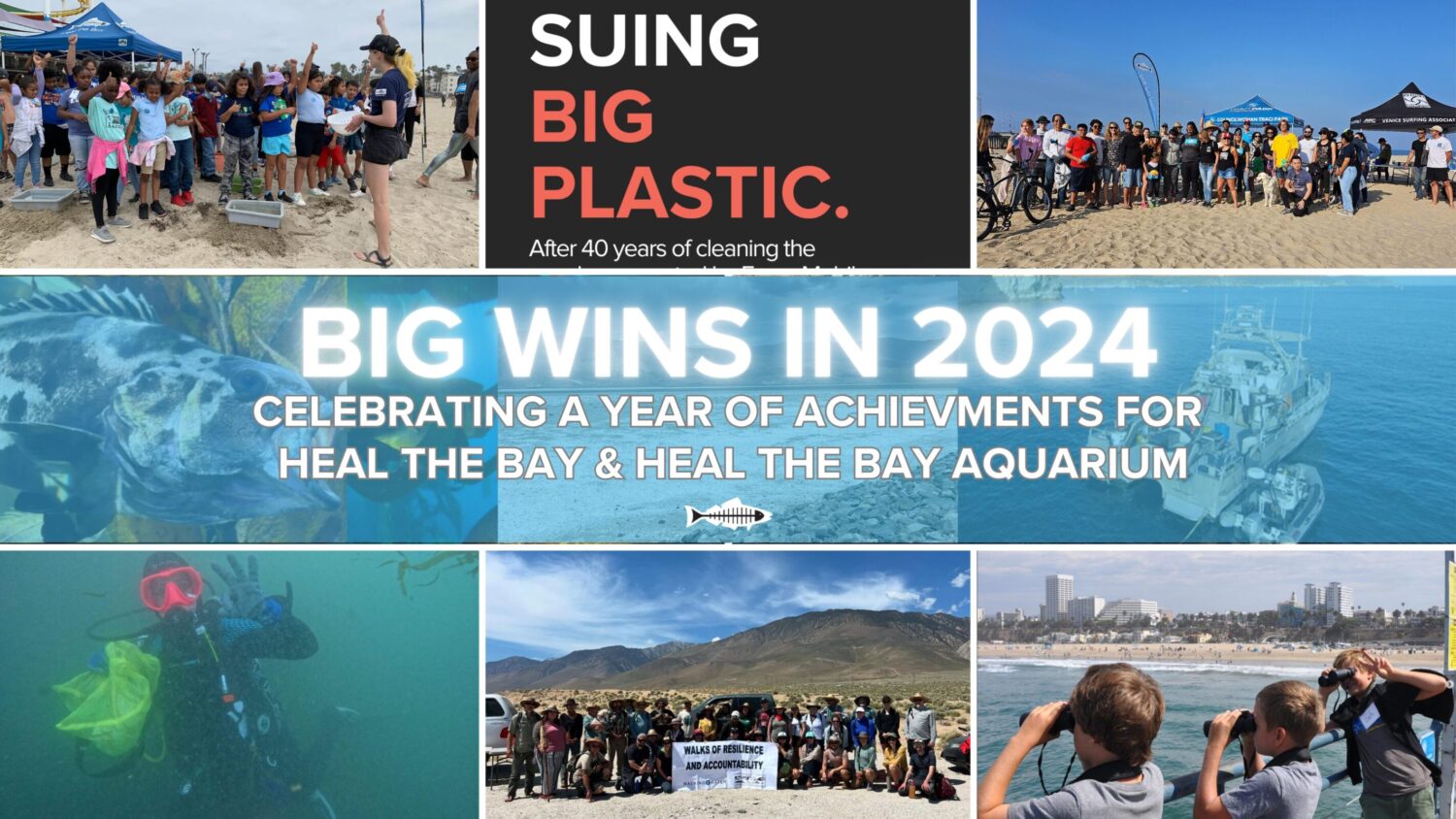
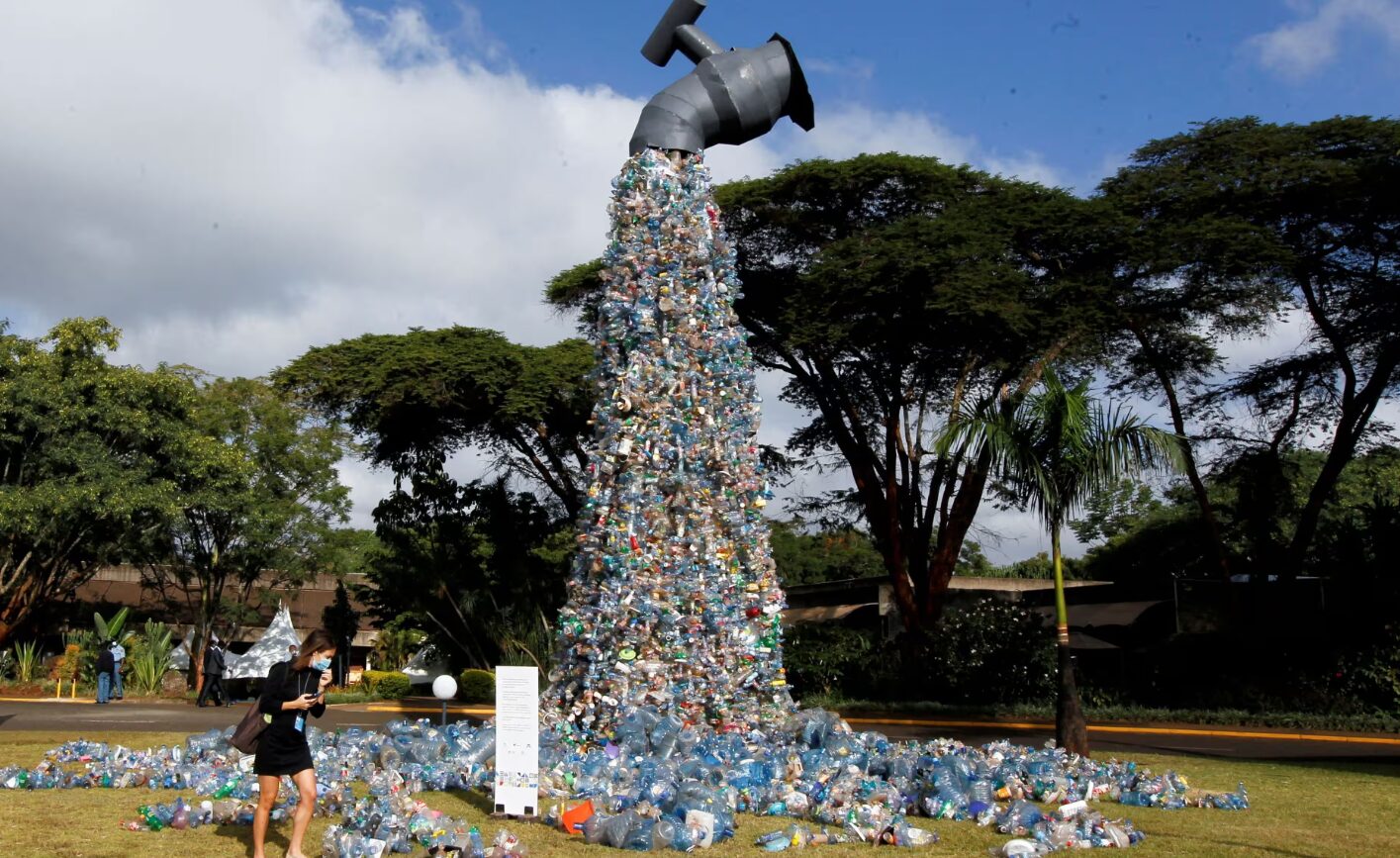 Heal the Bay co-authored the
Heal the Bay co-authored the 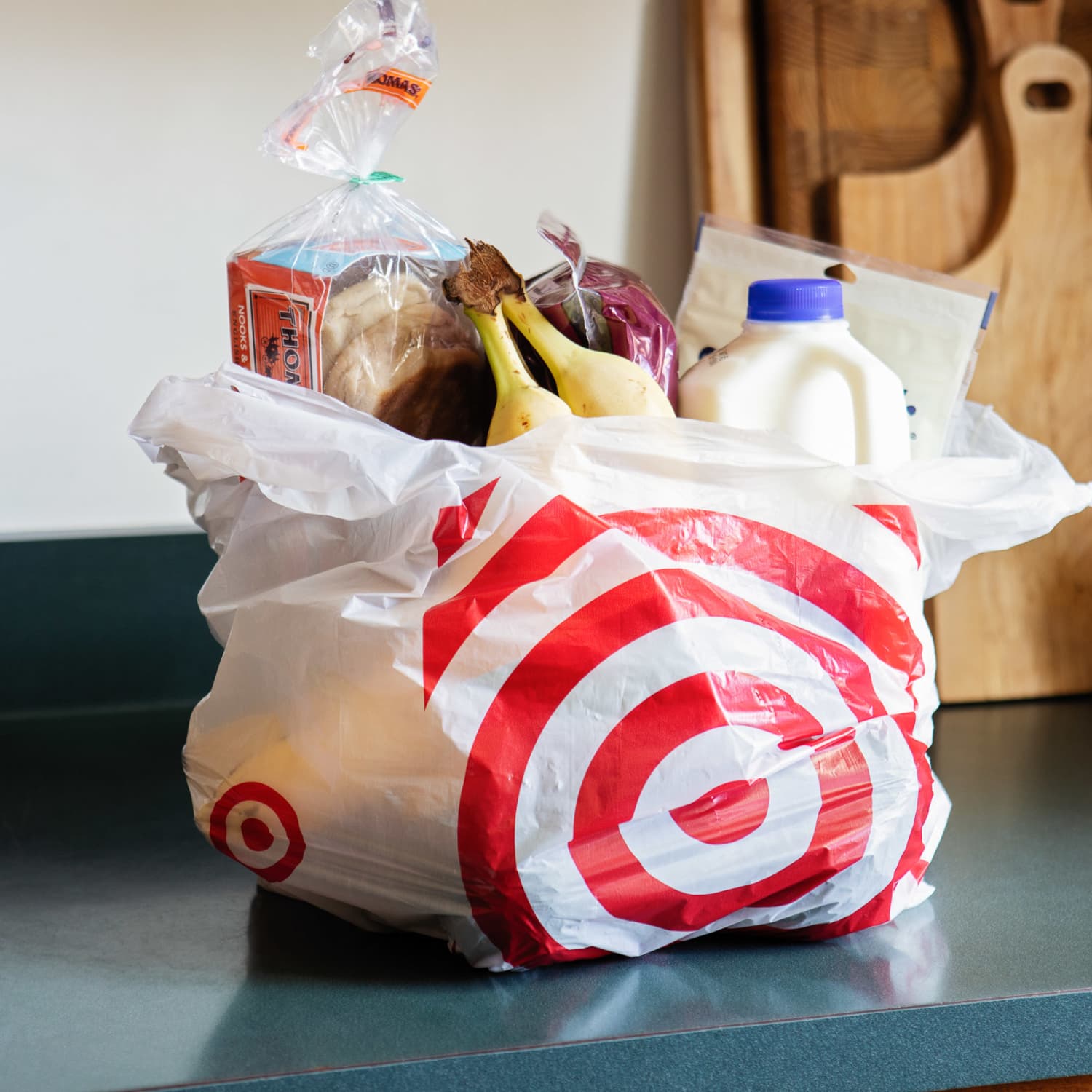 Heal the Bay advocacy supported major wins for state and local plastics regulation this year, including the passage of
Heal the Bay advocacy supported major wins for state and local plastics regulation this year, including the passage of 
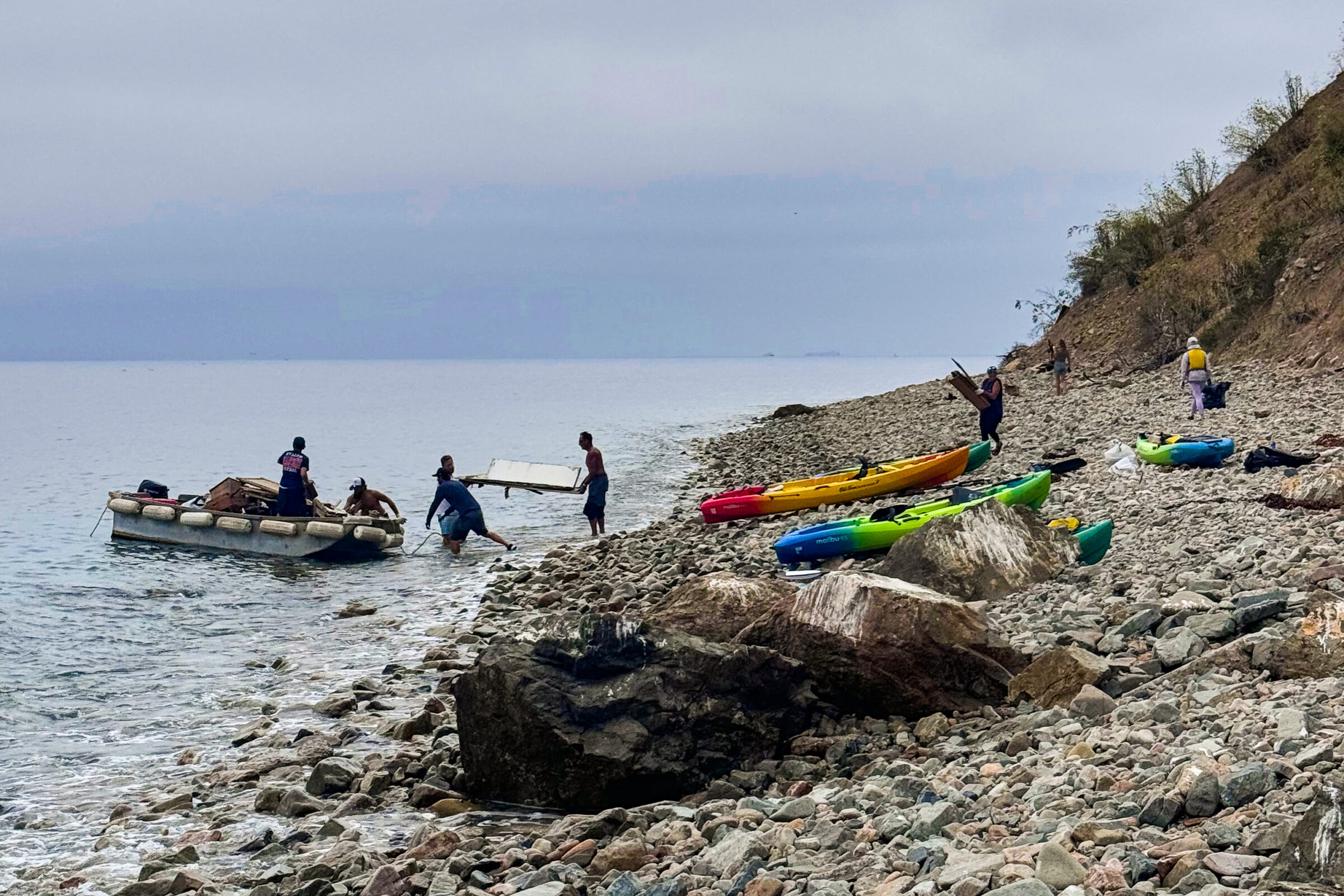 They were also featured as experts in the Los Angeles Times documentary “Out of Plain Sight.”.
They were also featured as experts in the Los Angeles Times documentary “Out of Plain Sight.”. 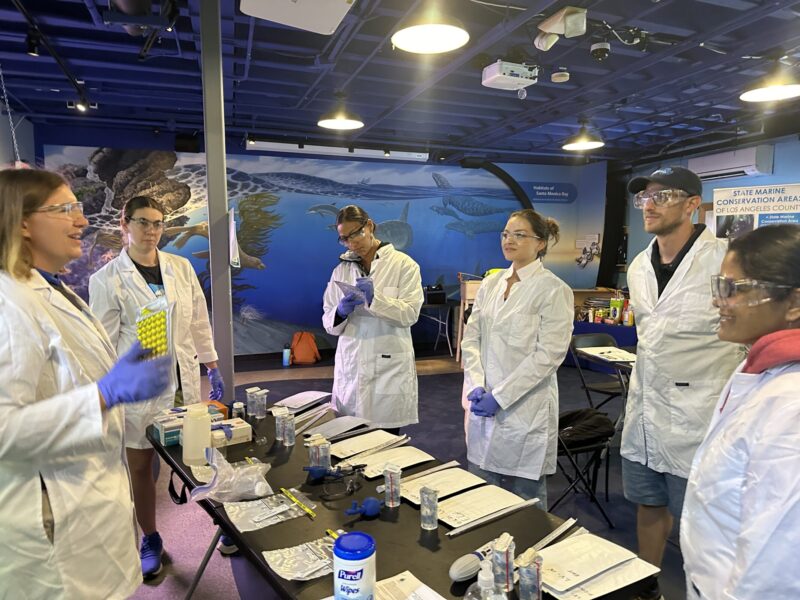
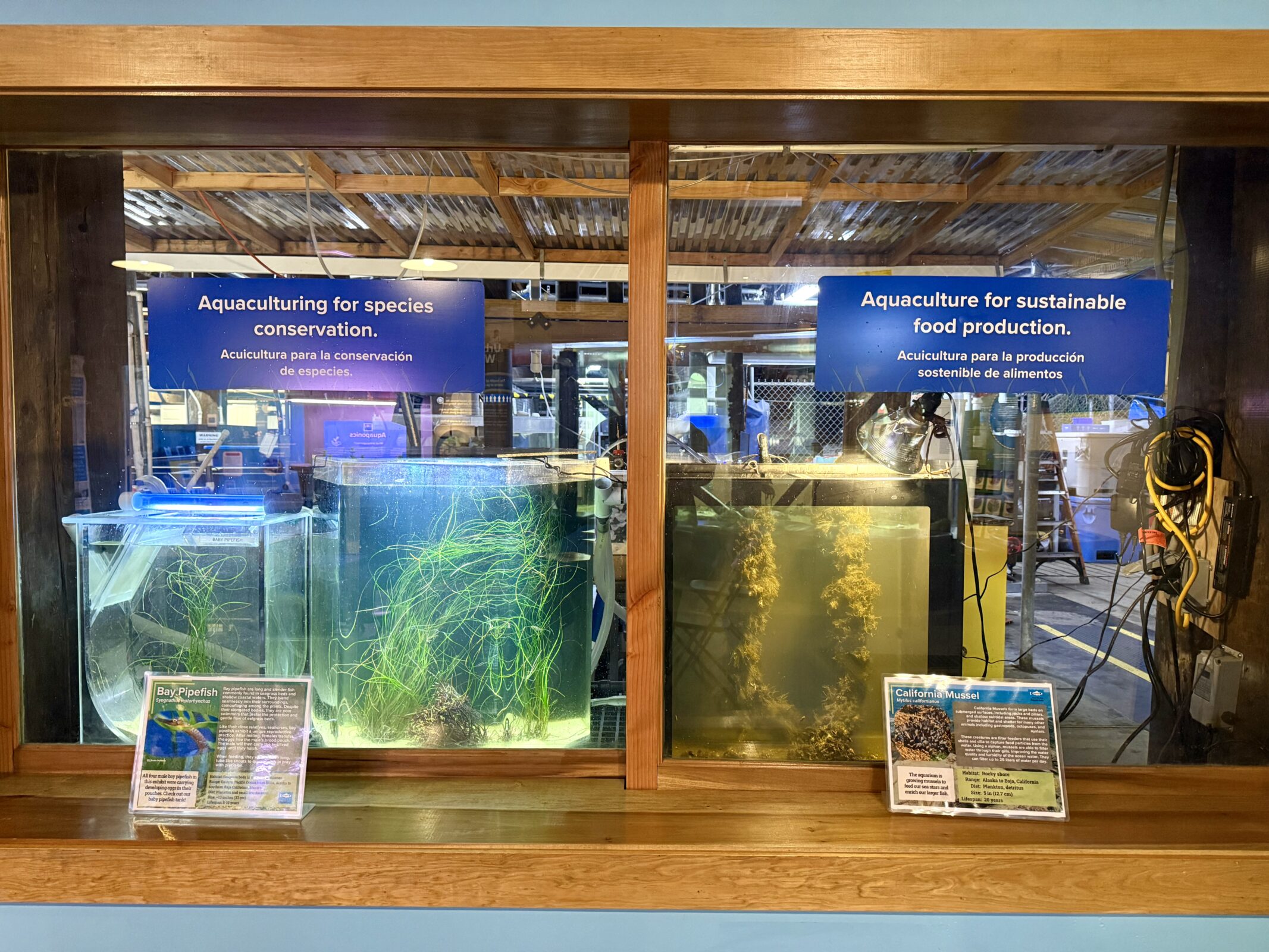 In 2024, Heal the Bay built a blue economy, providing professional training on sustainable aquaculture practices in partnership with Santa Monica College.
In 2024, Heal the Bay built a blue economy, providing professional training on sustainable aquaculture practices in partnership with Santa Monica College. 